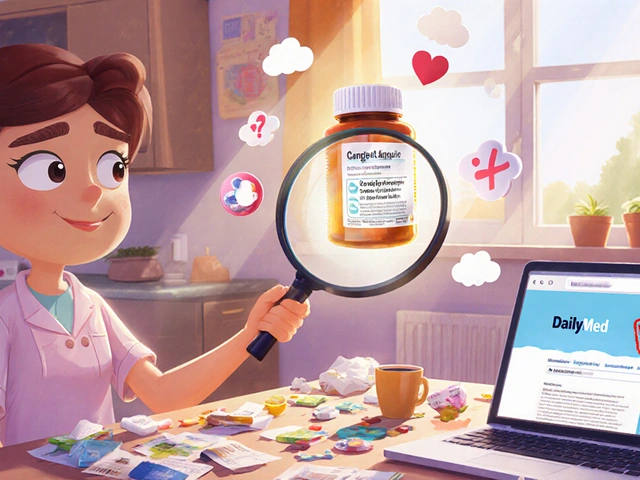Escitalopram: What It Treats and How to Use It
Escitalopram (brand name Lexapro) is a common SSRI antidepressant. Doctors prescribe it for major depression, generalized anxiety disorder, panic disorder, and sometimes for social anxiety. It changes brain chemistry to help lift mood and reduce anxiety. People often ask how fast it works, what dose to take, and what risks to watch for. This page gives straightforward, practical answers.
How escitalopram works and typical dosing
Escitalopram blocks the reuptake of serotonin, so more serotonin stays available in the brain. That helps symptoms improve over time. Most people start at 5 or 10 mg once daily. The usual effective range is 10–20 mg daily. Doctors may start lower for older adults or people with liver problems. You may notice small changes in the first 1–2 weeks, but meaningful improvement usually appears after 4–6 weeks. The drug’s half-life is about a day, so missing a dose can cause mild symptoms. Always follow your prescriber’s plan for starting, changing, or stopping the medicine.
Practical tips, side effects, and safety
Common side effects include nausea, tiredness, trouble sleeping, headache, dry mouth, and sexual side effects like lower libido or delayed orgasm. Most side effects ease in a few weeks. If they don’t, talk to your provider about dose changes or switching meds.
Watch for serious issues: serotonin syndrome (high fever, agitation, fast heartbeat, muscle stiffness) can occur if escitalopram is combined with certain drugs like MAOIs, some migraine medicines (triptans), or other serotonergic agents. Don’t take an MAOI within 14 days of stopping escitalopram and vice versa. People with a history of heart rhythm problems should mention this—escitalopram can affect the QT interval at high doses.
Young people and adolescents starting antidepressants need close follow-up. There’s a small increased risk of suicidal thoughts or behavior in people under 25. If a patient shows worsening mood, new suicidal thoughts, or unusual behavior, seek help right away.
Do not stop escitalopram abruptly. Stopping suddenly can cause dizziness, electric shock sensations, sweating, or flu-like symptoms. Your prescriber should taper the dose over days or weeks. If you plan pregnancy or are breastfeeding, talk with your doctor. Escitalopram can have risks during pregnancy and while nursing; benefits and risks should be weighed carefully.
Escitalopram interacts with blood thinners (warfarin), certain heart medicines, and strong CYP inhibitors like some antifungal or antibiotic drugs. Always give your full medication list to the prescriber, including supplements like St. John’s wort, which can raise serotonin risk.
If you’re buying medication online, use a licensed pharmacy, check for a valid prescription requirement, and read reviews. Never buy from sites that don’t list a physical address or pharmacist contact. Keep regular follow-ups with your prescriber to adjust dose and monitor side effects. If you have questions about how escitalopram fits your situation, ask your healthcare team—personalized advice beats general info every time.

Escitalopram and Pregnancy: What You Need to Know
As a blogger, I feel it's essential to discuss the topic of Escitalopram and pregnancy. Many women have concerns about the safety of taking this antidepressant while pregnant. From my research, it appears that the risk of birth defects is low, but there may be some potential risks to the baby. It's crucial for expectant mothers to consult with their healthcare provider to weigh the benefits and risks before making a decision. Remember, it's all about finding the best balance for both mom and baby's well-being.
Categories
- Medications (50)
- Health and Medicine (46)
- Health and Wellness (34)
- Online Pharmacy Guides (15)
- Nutrition and Supplements (7)
- Parenting and Family (3)
- Environment and Conservation (2)
- healthcare (2)
- prescription savings (1)
Popular Articles



